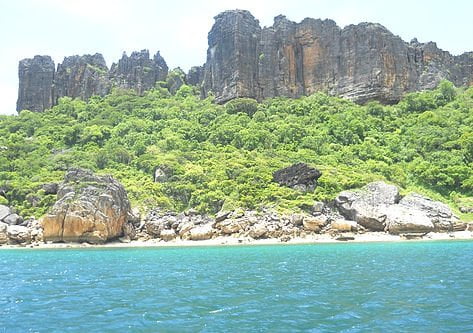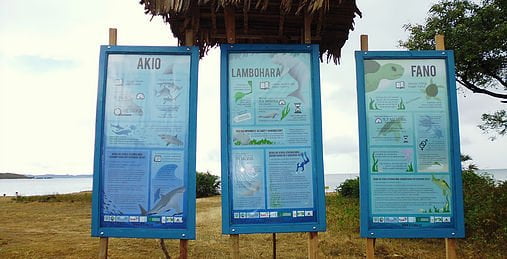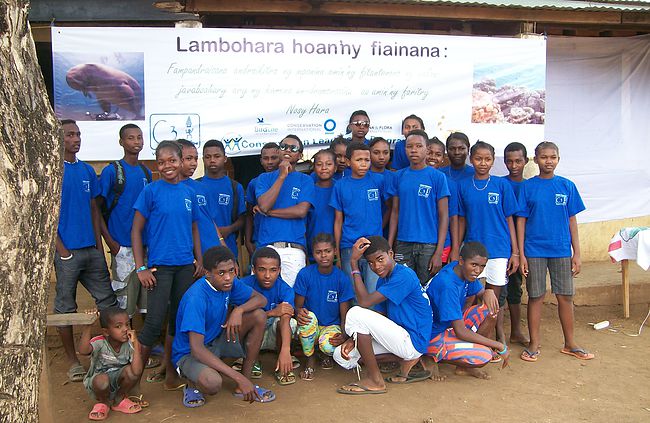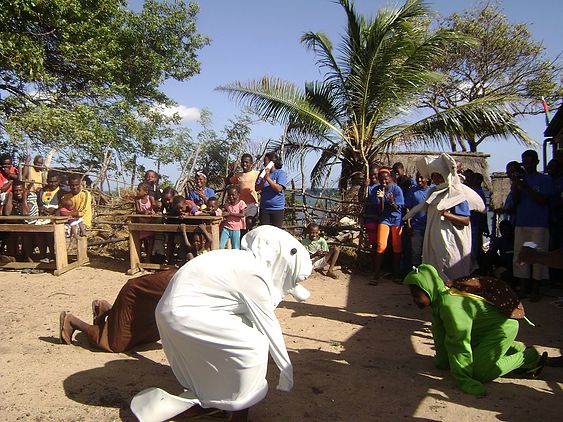Dugong Conservation Project Update in Madagascar
January 01, 2016
Our Fishers’ Dugong Sighting Programme has been a success, with adults and calves spotted in the mornings swimming around the small islands of the Marine Park since April 2015. This means that the population, though small, is still reproductively viable with new generations of dugongs surviving in the protected area. No hunting or accidental mortalities were reported in 2015 which is great news!

Information boards and postcards about dugongs have been distributed throughout the Park in the local language, Sakalava, and are already proving a great talking point with passers-by. The postcards, which have also been distributed in the urban centre of Diego, have key facts on the back and a stunning dugong photo on the front, so they are now adorning people’s rooms and meeting places. As most people haven’t seen a dugong before, it’s a great way to spread awareness and awe for this mysterious marine mammal.

Our field staff have just completed community consultations this month (Dec 2015), discussing recent livelihoods enterprises – a chicken farm and tourist restaurant – to see how they’re coming along and to offer further technical support if needed. We’ve also been having fisher consultations to discuss new enterprises they’d like to launch from 2016, the shortlist of which will then be subject to in-depth feasibility analyses.

We have also completed a meeting with other NGOs, including Dugonmg & Seagrass Conservation Project national colleagues: Wildlife Conservation Society (WCS) and Blue Ventures (BV), to get updated on their projects and ensure we liaise closely to share lessons learned and methodologies across our project sites in Madagascar.
We’ve got field teams posted permanently on 4 of the small islands off the coast (Nosy Hara ,Nosy Vao, Nosy Fotsy and Nosy Vaha) monitoring sea turtle nesting from November through to March, so we see this as a great opportunity to also monitor any passing dugongs which are known to share this habitat.
Our Junior Ecoguard Network, which is comprised of youth aged 12-18 years from remote coastal communities, has been busy touring the Park raising awareness through theatre on the role of seagrass beds in the Park, dugong facts, fisheries regulations and closed seasons. We’re in the process of producing a Teachers Manual & Toolkit which will roll-out across the entire region of northern Madagascar in 2016 along with in-depth teacher training sessions. This presents an amazing opportunity to build youth capacity and encourage active involvement in environmental outreach and conservation activities.

